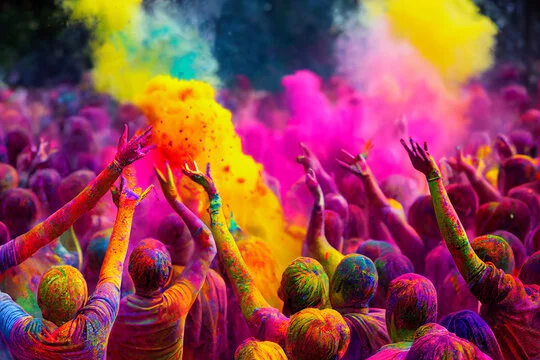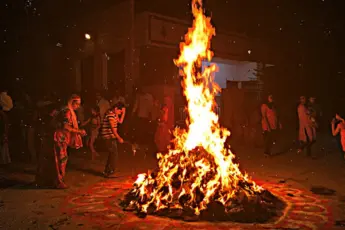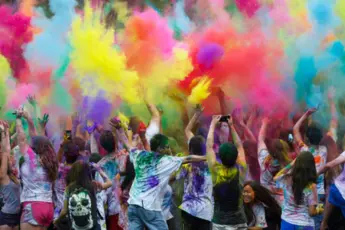Our Festival
Holi
The Festival of Colors, is a vibrant and exuberant celebration that marks the arrival of spring in India.
Holi, also known as the Festival of Colors, is a vibrant and exuberant celebration that marks the arrival of spring in India. This ancient Hindu festival is widely celebrated not only in India but also by communities around the world. Holi brings people together to revel in the spirit of unity, joy, and the triumph of good over evil. Let’s delve into the rich cultural significance, traditions, and the lively atmosphere that make Holi a unique and cherished festival.

Holi has transcended its cultural boundaries and gained popularity worldwide. Communities across the globe, regardless of their religious or cultural backgrounds, have embraced the festival as a symbol of unity, diversity, and the shared human experience.
One of the most popular stories revolves around the demoness Holika and Prahlada, a devotee of Lord Vishnu.
Historical and Cultural Significance:
The roots of Holi can be traced back to Hindu mythology, where it is associated with various legends. One of the most popular stories revolves around the demoness Holika and Prahlada, a devotee of Lord Vishnu. The burning of Holika, symbolizing the victory of good over evil, is reenacted through bonfires known as “Holika Dahan” on the eve of Holi.
Colors and Symbolism:
The hallmark of Holi is the playful throwing and smearing of colored powders and water. These vibrant colors are not just for aesthetic pleasure; they hold a deeper symbolic meaning. Holi transcends social boundaries, fostering a sense of unity and equality. During this festival, people of all ages, backgrounds, and social statuses come together, dissolving differences in a rainbow of hues.
Traditions and Celebrations:
Holika Dahan: The festival kicks off with the lighting of bonfires on the night before Holi. Families and communities gather around these fires, performing rituals, singing hymns, and offering prayers.
Play with Colors: The main event of Holi involves the playful throwing of colored powders, known as “gulal,” and water balloons. Streets and public spaces transform into a riot of colors as people chase each other, sharing laughter and joy.
Music and Dance: Traditional folk songs and dances add to the festive atmosphere. People gather to sing and dance, creating an infectious energy that sweeps through the community.
Sweets and Special Dishes: Holi is also a time for indulging in delectable treats. Gujiya, a sweet dumpling, and other special dishes are prepared and shared among family and friends.
Bhang: In some regions, the festival is accompanied by the consumption of a traditional drink called “bhang.” Made from cannabis, milk, and various spices, it is believed to enhance the spirit of celebration.


Holi, with its kaleidoscope of colors and infectious joy, is more than just a festival. It is a celebration of life, love, and the renewal of nature. As people come together to play, dance, and share in the revelry, Holi transcends religious and cultural boundaries, fostering a sense of community and togetherness that resonates far beyond the borders of India. May the colors of Holi inspire us all to embrace the diversity around us and celebrate the beauty of unity.
Error: Contact form not found.
